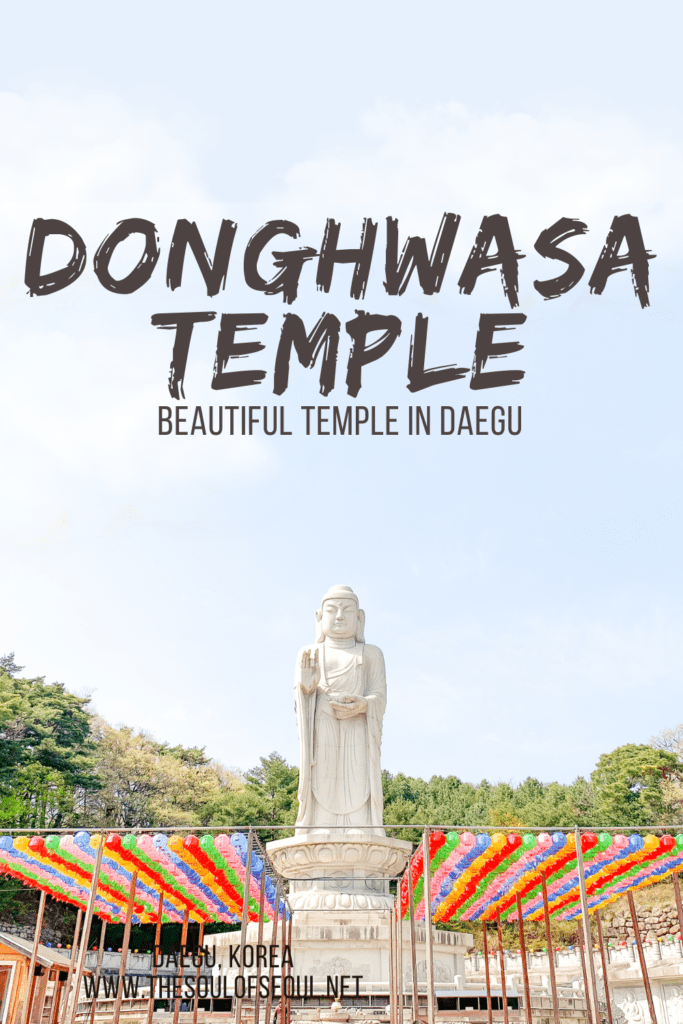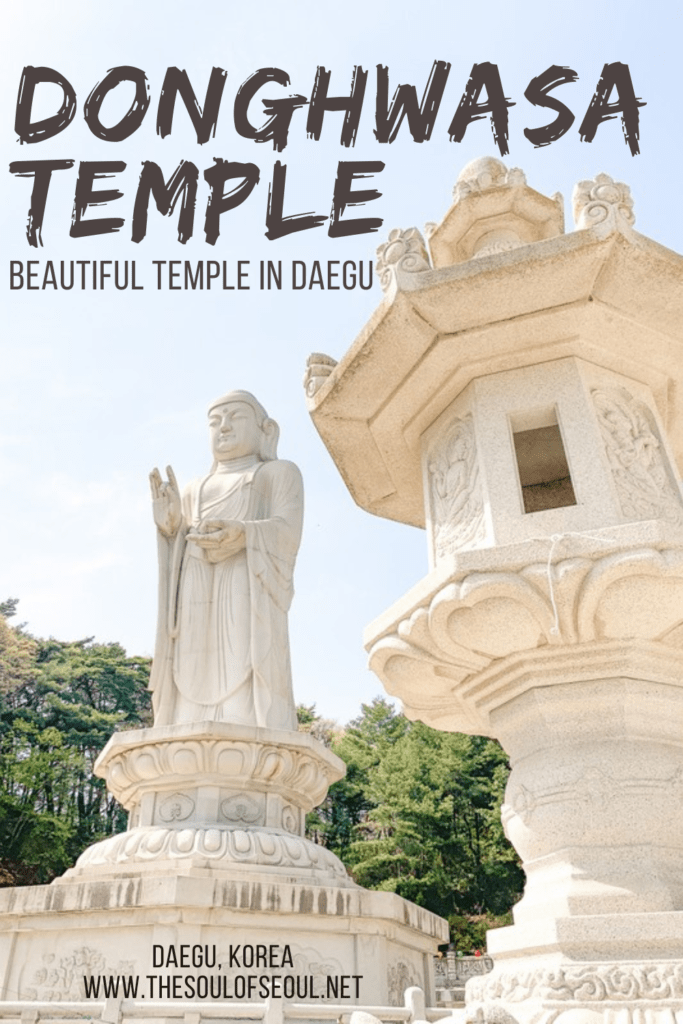Donghwasa Temple: A Beautiful Buddhist Temple in Daegu
Last Updated on May 21, 2024
When spring breezes sweep across South Korea, one of my favorite pastimes is visiting Buddhist temples. Decorated with colorful lotus lanterns for Buddha’s Birthday, the temples that are always a welcome respite are even more welcoming and beautiful at this time of the year.
Donghwasa Temple in Daegu, one of the top scenic sites of the city, is especially beautiful in the spring. With sprawling grounds, lots of history, and stories to tell, if you’re headed to Daegu soon, be sure to visit Donghwasa.
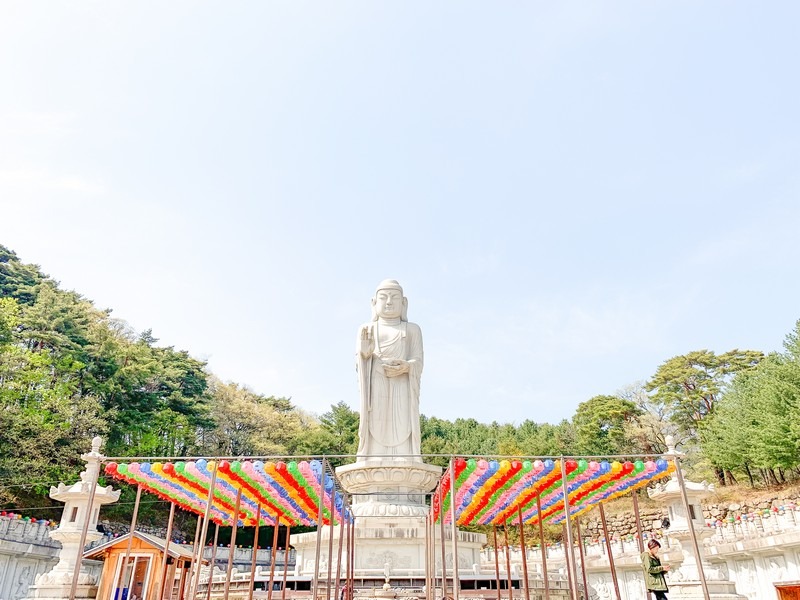
(This post contains affiliate links, which means I receive a certain percentage of a sale if you purchase after clicking at no cost to you. Thank you for your support.)
Basic Info
Address: 1 Donghwasa 1-gil, Dong-gu, Daegu (대구광역시 동구 동화사1길 1)
Hours: Sunrise to Sunset

The History of Donghwasa Temple
Founded by Monk Geukdal in 493, the temple was originally named Yugasa Temple. Later in 832, it was reconstructed by Great Monk Simji and renamed Donghwasa after the blooming of the paulownia trees.
There’s a story that says the Palganja, the 8 bones of Buddha, handed down from Monk Jinpyo of Geumsansa Temple to Monk Yeongsim of Beopjusa Temple and taken by Great Monk Simji, were threw the bones on the mountain. Where they dropped, was where the temple was built.
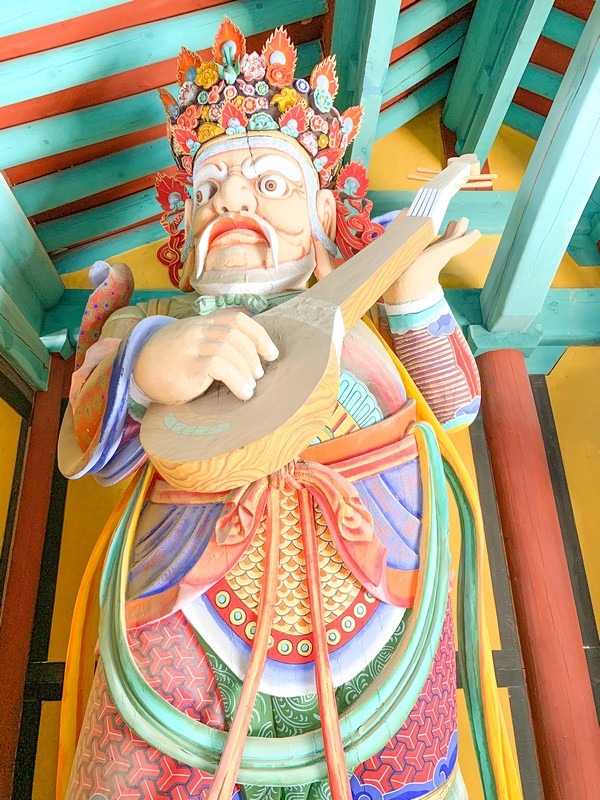

During the Japanese invasion, 1592-1597, Great Master Samyeong resided at the temple and commanded a monk militia. I remembered learning about Buddhist soldiers when I had visited Mangwolsa Temple before. If you haven’t heard about the history, look into it. Buddhist history in Korea may not be what you think.
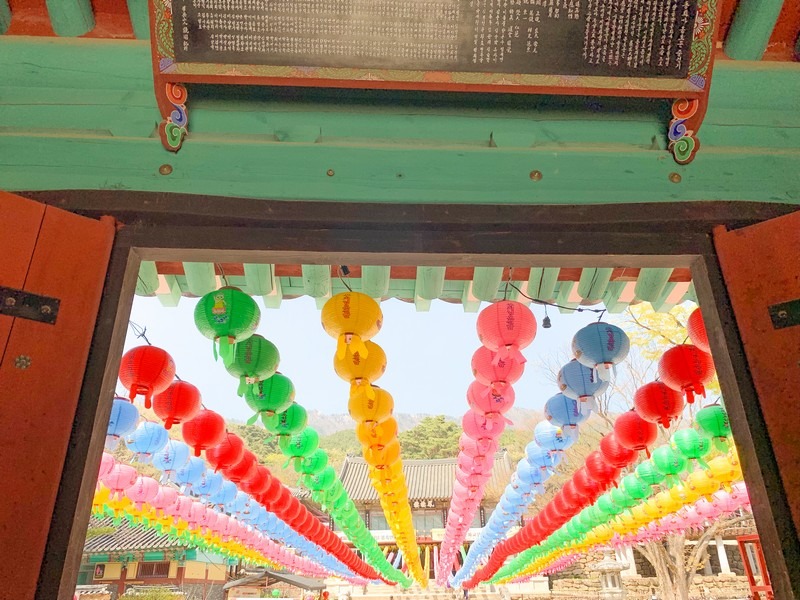
Over time, the temple was reconstructed eight times, with most existing buildings being reconstructed during the reign of King Yeongjo during the Joseon Dynasty in the 1700s. Today, the temple is one of the 10 scenic spots of Daegu and definitely what you should see in Daegu if you go.
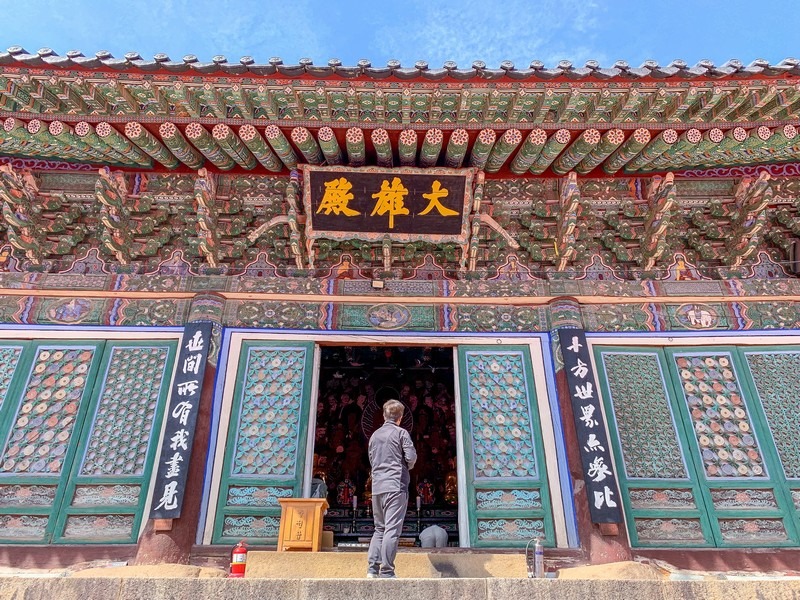
Highlights of the Temple
Daeungjeon Hall: Built with three front sections and 3 side sections to represent Palgongsan Mountain, this building was constructed during the reign of King Yeongjo during the Joseon period.
The inner butsudans are used to worship Shakyamuni Buddha, Amitabha and Yaksa Buddha. Those lifelike Buddhas with the gesture of lowering their heads to read make us think of the Confucian scholars in Joseon Period, and those birds of paradise carved in the ceiling are full of vigor as if they were alive.

Bongseoru Pavilion: The first building you can see in Donghwasa Temple is Bongseo-lu. The Bongseo-lu means “Pavilion where the Phoenix lives”, symbolizing that phoenix only builds its house in the phoenix tree, echoing Donghwasa Temple’s name of phoenix tree flower with each other.
There’s a unique architectural style here where the door was made by erecting a rectangular stone column and 5 wooden towers stand on top. Look for the large natural stone in the middle of the stairs that lead up to the pavilion, this symbolizes the egg of the phoenix.


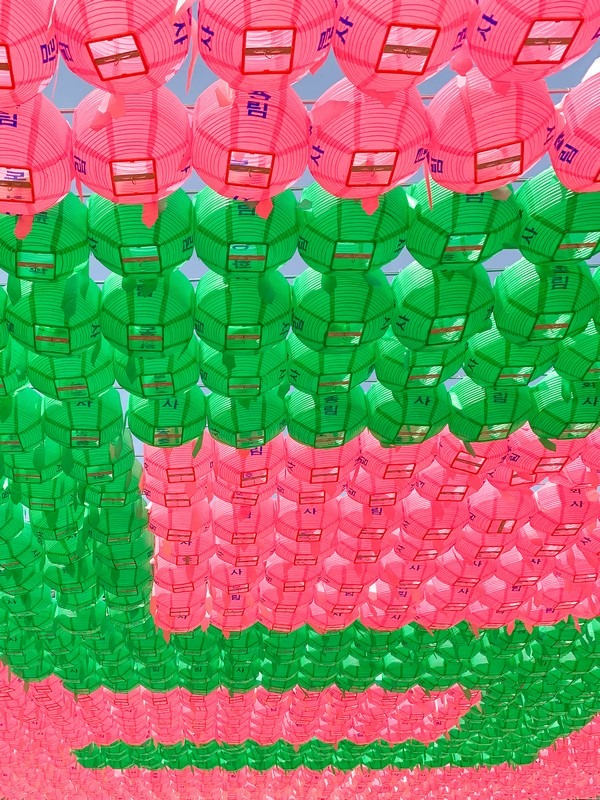
Tongil Yaksa Yeorae Daebul: As you walk through the temple, make sure to follow the path until you find the towering Tongil Yaksa Yeorae Daebul, a statue of the Unification Medicine Buddha that was erected in 1992.
Standing at 33 meters, walk around to full take the statue in. It’s an especially beautiful area if you visit in the spring when the lotus lanterns are strung throughout the entire complex.
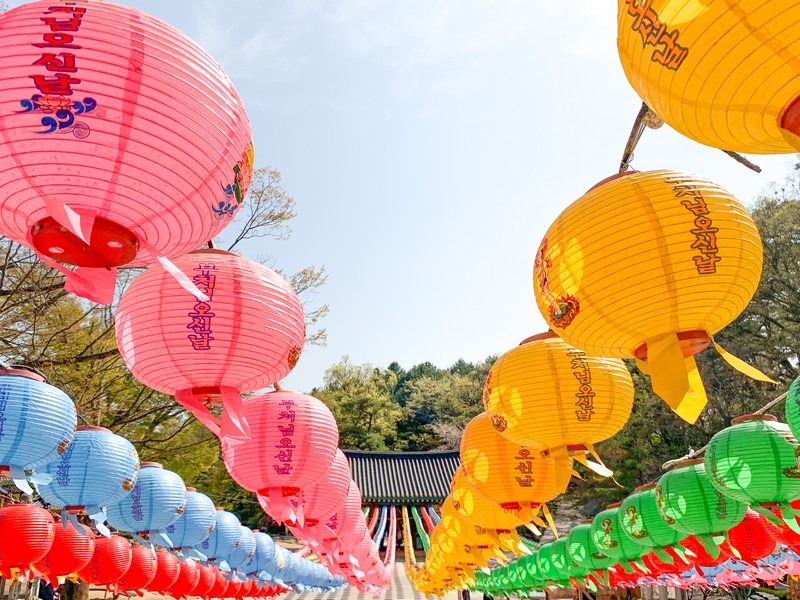
This temple complex is quite large, so be prepared to take your time to see it all. There are some beautiful Buddhist temples in Korea, and this is definitely a beautiful one to visit if you’re in the Daegu area and definitely if you visit Daegu in the spring.
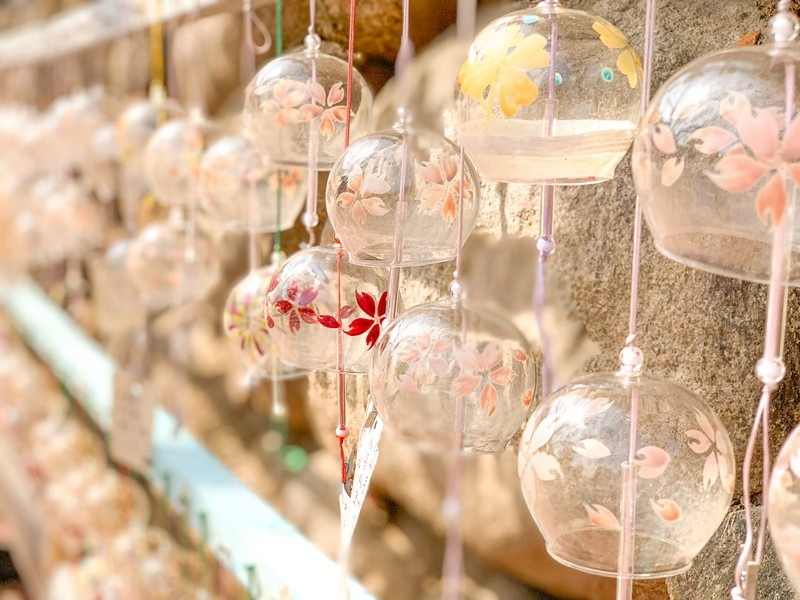
Did you like this post? Pin IT!
